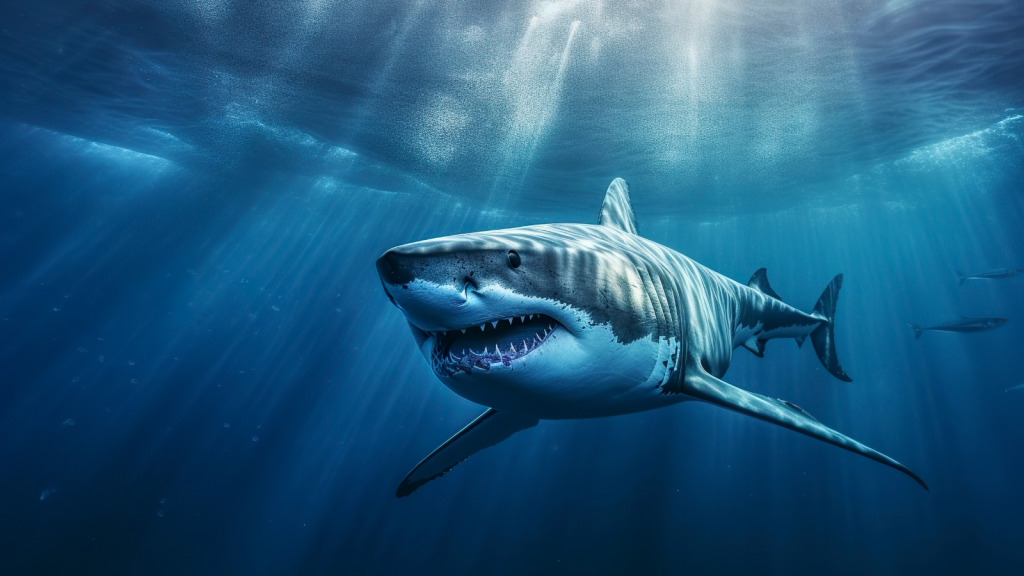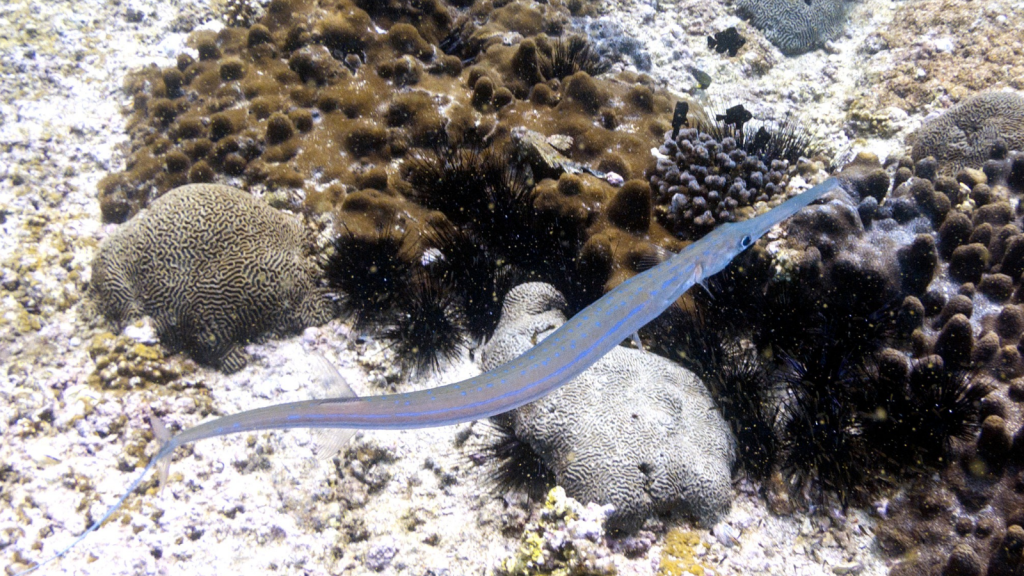The oceans are home to some of the most fascinating creatures on Earth, but not all of them are friendly. From the depths of the sea to coastal waters, aggressive fish lurk in every corner. These underwater warriors have evolved unique ways to defend themselves, hunt prey, and survive in harsh environments. Some use their sharp teeth and powerful jaws, while others rely on venomous spines or electrical shocks. Get ready to meet the ocean’s toughest customers as we explore 17 of the most aggressive fish swimming in our seas today.
Great White Shark

The great white shark needs no introduction. This apex predator can grow up to 6 metres long and boasts rows of razor-sharp teeth. Known for their powerful bite force and ability to detect blood from miles away, great whites are feared by swimmers and surfers alike. Despite their fierce reputation, these sharks rarely target humans and prefer seals and other marine mammals. Great whites play a crucial role in maintaining the balance of marine ecosystems by controlling populations of seals and other prey species.
Piranha

Found in the freshwater rivers of South America, piranhas are infamous for their razor-sharp teeth and powerful jaws. These small but mighty fish hunt in schools, quickly stripping flesh from their prey. While Hollywood has exaggerated their man-eating tendencies, piranhas can still deliver a nasty bite if threatened. Some species of piranha are actually omnivorous, feeding on plants and fruits that fall into the water.
Barracuda

With their long, sleek bodies and frightening teeth, barracudas are built for speed and aggression. These predators can reach speeds of up to 35 mph when chasing prey. Barracudas are known for their curiosity and may mistake shiny objects for prey, occasionally leading to attacks on unsuspecting swimmers. They have excellent eyesight and often rely on ambush tactics to catch their prey.
Moray Eel

Hiding in rocky crevices, moray eels are ambush predators with powerful jaws and sharp teeth. These snake-like fish can grow up to 3 metres long and are known for their aggressive territorial behaviour. Moray eels have a second set of jaws in their throat, which they use to drag prey into their mouths. Their poor eyesight is compensated by an excellent sense of smell, which they use to locate prey in dark reef crevices.
Lionfish

With their striking appearance and venomous spines, lionfish are both beautiful and deadly. Native to the Indo-Pacific, these invasive fish have spread to many parts of the world, wreaking havoc on local ecosystems. Their aggressive hunting behaviour and lack of natural predators make them a significant threat to native fish populations. Lionfish can consume prey up to half their own body size, contributing to their rapid population growth in invaded areas.
Blue-Ringed Octopus

Although not technically a fish, the blue-ringed octopus deserves a spot on this list for its aggressive nature and deadly venom. These small cephalopods may look harmless, but their bite can cause paralysis and death in humans within minutes. Found in tide pools and coral reefs, they flash their bright blue rings as a warning when threatened. The venom of a blue-ringed octopus is powerful enough to kill 26 adult humans within minutes.
Stonefish

Considered one of the most venomous fish in the world, the stonefish is a master of camouflage. These bottom-dwelling fish blend in perfectly with their surroundings, making them nearly invisible to prey and potential threats. Their dorsal fin spines contain a potent venom that can cause excruciating pain and even death if left untreated. Stonefish venom can remain active for up to 24 hours after the fish has died, making them dangerous even when out of the water.
Tiger Fish

Native to African rivers, the tiger fish is a fearsome predator with razor-sharp teeth and powerful jaws. These aggressive fish are known for their ferocious attacks on prey, often leaping out of the water to catch birds and small mammals. Tiger fish are popular among sport fishermen for their fighting spirit and acrobatic jumps when hooked. Their teeth are so sharp that they can easily bite through steel fishing lines.
Needlefish

With their long, slender bodies and sharp beaks, needlefish are built for speed and aggression. These fish can leap out of the water at high speeds, sometimes injuring unsuspecting boaters or swimmers. Their powerful jaws and needle-like teeth make them formidable predators in both saltwater and freshwater environments. Needlefish have been known to cause serious injuries and even fatalities when they leap out of the water and impale humans with their sharp beaks.
Electric Eel

Despite its name, the electric eel is actually a type of knifefish. These Amazonian creatures can generate electric shocks of up to 600 volts to stun prey and defend themselves. Electric eels use their electricity not only for hunting and self-defence but also for navigation and communication in murky waters. They can produce both low-voltage and high-voltage discharges, using the former to locate prey and the latter to stun or kill it.
Giant Trevally

Also known as the GT, the giant trevally is a powerful predator found in tropical and subtropical waters. These fish are known for their aggressive hunting tactics, often chasing prey onto beaches or leaping out of the water to catch birds. Giant trevallies can grow up to 1.7 metres long and are prized by anglers for their fighting ability. They have been observed working in groups to herd and trap smaller fish, demonstrating a level of cooperative hunting behaviour.
Bull Shark

Named for their short, blunt snouts and aggressive nature, bull sharks are among the most dangerous sharks to humans. These adaptable predators can survive in both saltwater and freshwater, often venturing far up rivers. Bull sharks are known for their unpredictable behaviour and powerful bite force, making them a formidable presence in coastal waters. Their ability to regulate salt levels in their bodies allows them to move between fresh and salt water with ease, a rare trait among sharks.
Boxfish

Don’t let their cute, boxy appearance fool you – these small fish pack a powerful punch. When threatened, boxfish release a potent toxin that can kill nearby fish and even humans in confined spaces. Their aggressive behaviour and toxic defences make them a force to be reckoned with in coral reef ecosystems. The boxfish’s hard, box-like body also serves as armour, protecting it from potential predators.
Swordfish

With their distinctive bill-like snout, swordfish are built for both speed and aggression. These open-ocean predators can reach speeds of up to 50 mph and use their “sword” to slash at prey, stunning or injuring them before consumption. Swordfish are known for their powerful swimming abilities and occasional aggressive behaviour towards boats. They have a unique adaptation that allows them to heat their eyes and brain, improving their vision when hunting in cold, deep waters.
Red Bellied Pacu

Often mistaken for piranhas, red-bellied pacus are omnivorous fish with surprisingly human-like teeth. While not typically aggressive towards humans, these fish have been known to bite swimmers, mistaking them for food. Their powerful jaws and teeth, designed for crushing nuts and fruits, can deliver a painful bite if provoked. In some areas, pacus have become invasive species, disrupting local ecosystems due to their varied diet and aggressive feeding habits.
Triggerfish

Found in tropical and subtropical waters, triggerfish are known for their aggressive territorial behaviour, especially during breeding season. These colourful fish have powerful jaws and sharp teeth, which they use to defend their nests from intruders. Divers and snorkelers are often warned to keep their distance from triggerfish to avoid painful bites. Triggerfish get their name from their ability to lock their first dorsal spine erect, using it as a defensive mechanism when threatened.
Candiru

Perhaps the most notorious fish on this list, the candiru is a tiny parasitic catfish native to the Amazon River. These fish have gained a fearsome reputation for their alleged ability to swim up human urethras, causing severe pain and requiring surgical removal. While such incidents are rare and disputed, the candiru’s aggressive parasitic nature makes it a truly terrifying creature. In reality, candiru primarily feed on the blood of larger fish, entering their gills to access blood vessels.
Modern Sea Monsters | 15 Massive Marine Mammals Still Roaming Our Oceans

The oceans of our planet are home to some of the most awe-inspiring creatures on Earth. These marine mammals, with their enormous size and incredible adaptations, seem alien or prehistoric. But an actual up-close interaction with one of these incredible creatures is life-changing. Their lives and sheer size might be unfathomable, but their intelligence and magnificence is clear for all to see. From the largest animal to ever exist to deep-diving behemoths with teeth as big as your arm, these creatures are awe-inspiring and remind us why we need to do more to save our oceans before it’s too late.
Read More: Modern Sea Monsters | 15 Massive Marine Mammals Still Roaming Our Oceans
15 Animals That Eat Hornets

Nature never fails to amaze me. Who would’ve thought so many creatures would prey on hornets? Their painful stings and fierce and aggressive behaviour make them seem like a pretty unappetizing meal to me. While hornets might seem like formidable insects that few creatures would dare to tangle with, they actually have quite a few natural enemies. From nimble birds to crafty mammals, plenty of other creatures make meals out of these stinging insects.
Read More: 15 Animals That Eat Hornets
Becky is a fervent wildlife enthusiast and pet care expert with a diploma in canine nutrition. Her love for animals stretches beyond the domestic, embracing the wild tapestry of global fauna. With over a decade of experience in animal welfare, Becky lends her expertise to OutlandishOwl through insightful articles, captivating wildlife information, and invaluable guidance on pet nutrition. Her work embodies a deep commitment to understanding the intricate lives of animals and a passion for educating others on sustaining natural habitats. Becky's hands-on conservation efforts and her knack for translating complex dietary science into practical pet feeding tips make her an indispensable voice for creatures great and small.




